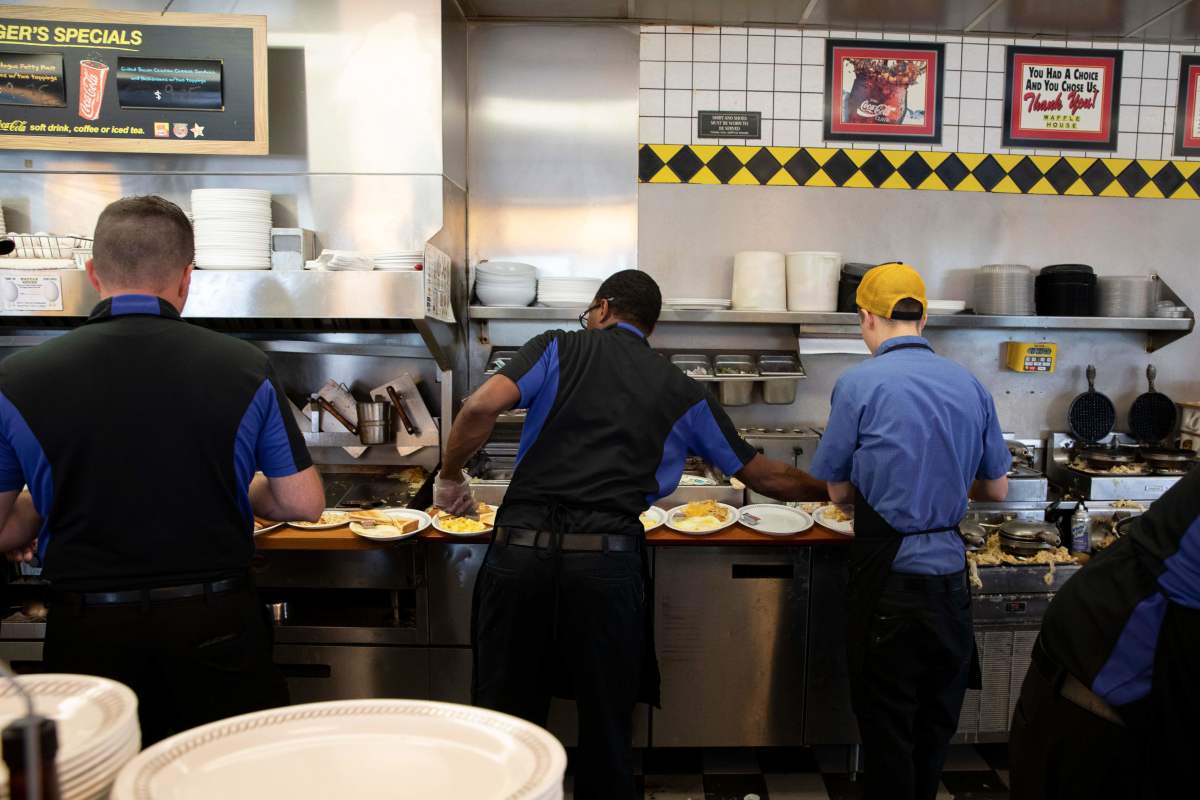
Businesses are facing immense pressure from their workers to raise wages amid record-high inflation, and the fast-food industry is no exception to this trend. As fast-food restaurants have caved to the pressure and increased employee hourly pay, they are making customers foot the bill.
One of the latest fast-food establishments to hop on this trend is the beloved restaurant chain Waffle House. After months of facing pushback from its unionized workers over the past year to raise worker pay, as well as the inclusion of other benefits, the company finally announced to its workers a few weeks ago that their base pay will increase to $3 per hour starting this month and will eventually increase to $5.25 per hour by June 2026. Wages will also vary across states due to different minimum wage laws.
Related: Chipotle isn’t shy about making a controversial move
But the catch is that customers will pay for the wage hike via higher menu prices. In a video message to employees, Waffle House CEO Joe Rogers III said that locations in urban cities will have higher menu price hikes than those in suburban areas due to urban areas having higher costs of living.
“We need to increase menu prices to pay for this journey, and we have more ability to do that in some places and less ability in others,” said Rogers in the video.
Rogers also specified in the video that the higher menu prices will come with better hospitality and service, cleanliness, and food portion sizes from the restaurant, which will all “elevate to a new level.”
“We need to ultimately get ready for what sort of expectations come with both rising pay and rising prices,” said Rogers. “You better believe our customers are going to expect more when they pay more, and we don’t want to hurt your tip realities either.”

The move from Waffle House comes after the Union of Southern Service Workers, which represents Waffle House workers, organized a series of strikes last year at different locations, demanding a wage of $25 per hour for all workers. The union also pushed (and are still pushing) for 24/7 security at restaurants amid an increase of in-store violence, and an end to the company’s mandatory meal deductions policy, where $3.15 a day is subtracted from workers’ paychecks regardless whether or not they eat on the job.
Related: Menu prices rising despite steady grocery prices
Waffle House isn’t the first restaurant to make customers pay for wage increases. Fast-food chain In-N-Out recently made the bold move to hike its prices for various menu items to help pay for California’s new $20 minimum wage. At a location in San Francisco, a double-double burger with french fries and a drink now costs $13.63 after taxes, according to Kron4.
More Food + Dining:
- Chipotle isn’t shy about making a controversial move
- Nestlé rejects proposal that would have forced it to sell healthier food
- Subway is breaking up with these popular drink brands
Even though restaurants have to deal with higher wage costs, a recent report from the Roosevelt Institute revealed that the fast-food industry has more than enough money to afford California’s $20 minimum wage after increasing its fast-food prices by roughly 47% over the past decade. Last year, fast-food restaurants charged prices that were 27% above their production costs.
“According to the data, there’s no reason why the new fast-food minimum wage of $20 per hour in California should mean layoffs or increased prices,” said Alí Bustamante, a co-author of the Roosevelt Institute’s report. “Profits in the fast-food industry are sufficiently high to absorb the greater operating costs and ensure industry workers are paid fairly.”
Related: Veteran fund manager picks favorite stocks for 2024







